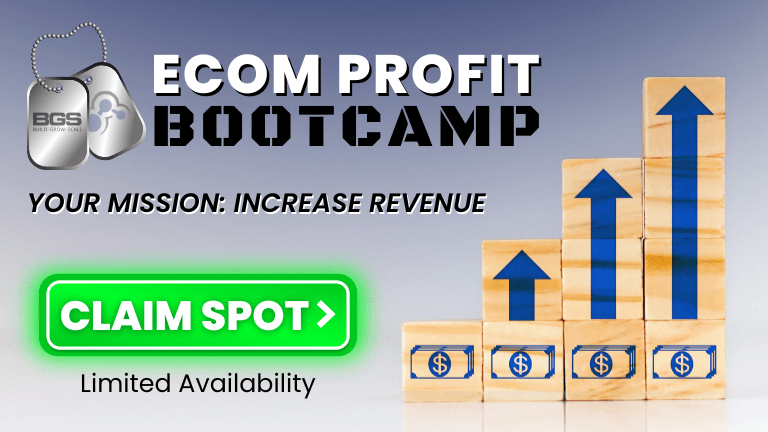The Ultimate Digital Marketing Strategy Guide for 2024

A well-crafted digital marketing strategy is the key to conquering the digital world. But a bag full of random tactics isn’t going to do the trick—you’ll need a concrete plan to guide your online journey.
So buckle up … we’re about to unravel the mystery of successful digital marketing and empower you to create a strategy that propels your ecommerce business to new heights!
What Is a Digital Marketing Strategy?
Your company’s digital marketing strategy is the blueprint you’ll use to achieve your online marketing goals. It’s a master plan leading you toward the vast digital landscape. It’s not enough to be online—you need to be able to be found online, capture attention, and turn that attention into action.
Think of it as a road map. You wouldn’t embark on a road trip without a map or GPS, would you? Similarly, you shouldn’t plunge into the digital sphere without a well-thought-out strategy.
So, what does it entail? It’s a blend of SEO, content marketing, social media, email marketing, PPC (pay per click), and more. Each component is crucial, but how they work together really counts. This isn’t a one-size-fits-all situation. What works for one company might not work for another. You need to know your audience, understand their needs, and tailor your strategy to meet those needs.
Done right, your digital marketing strategy can elevate your brand, increase visibility, and drive sustainable growth. It’s a journey, but a journey well worth taking!
Digital Marketing Strategy vs. Digital Marketing Tactic
In the world of digital marketing, it’s essential for you to understand the difference between a strategy and a tactic.
A digital marketing strategy is like a game plan. It’s the comprehensive outline that guides you through your digital marketing efforts. Think of it as the big picture of what you’d like to accomplish and how you plan to do it.
On the other hand, digital marketing tactics are the actions you take to reach the goals set by your strategy. They’re the steps you take to achieve your strategic objectives. Imagine your strategy is to climb a mountain; your tactics would be the chosen routes and gear you use.
So, while these terms are often used interchangeably, they’re quite different. Without a solid strategy, your tactics might be aimless. And without effective tactics, your strategy could be unachievable.
In digital marketing, having one without the other is not enough. To truly succeed, you need both a well-thought-out strategy and carefully chosen tactics. It’s a delicate dance, but it can lead to big success when executed correctly.
How to Create a Digital Marketing Strategy
Understanding your buyer persona is the first element of crafting a potent digital marketing strategy. After that, you’ll need to set clear goals and objectives, identify the right tools, and select effective digital channels. Let’s look at each step in detail!
1. Create your buyer persona
Before diving into the specifics of your strategy, it’s crucial to spend time creating a detailed buyer persona. This persona is a semi-fictional representation of your ideal customer based on market research and real data about your existing customers.
To build your buyer persona, consider demographics, behavior patterns, motivations, and goals. What’s the typical age of your target customer? What are their interests? What problems are they trying to solve? Combine these elements to form a vivid, comprehensive profile. Remember, you’re not just selling a product or service—you’re providing a solution to someone’s problem.
Creating a solid buyer persona will guide your marketing decisions, ensuring your strategy aligns with your audience’s needs and expectations. It’s a strategic step towards a successful digital marketing campaign.
2. Define your goals and objectives
Now that you have a detailed description of someone who represents your target audience, it’s time for you to define your digital marketing goals and objectives clearly.
Think about what you want to achieve. Is it brand awareness, lead generation, or sales growth? Be specific and realistic, setting measurable and time-bound targets.
A strategic approach to goal setting involves aligning your objectives with your business vision, mission, and values. This ensures consistency and coherence in your strategy.
Next, think creatively about how digital channels can help you meet these goals. Perhaps you’ll leverage social media for visibility or SEO to reach higher-quality leads.
3. Identify the tools required for digital marketing
Often, you’ll need to identify and utilize specific digital marketing tools to effectively achieve your goals. Let’s dive into which ones are crucial to your success.
- SEO tools, like Semrush or Moz, can help optimize your website, making it more discoverable by potential customers.
- Social media management tools, such as Hootsuite or Buffer, allow you to schedule posts across multiple platforms, streamlining your workflow.
- For content creation, Canva’s design tools can be a game-changer.
- Email marketing platforms like Klaviyo are essential for reaching out to your audience directly.
- Google Analytics is a must-have for data-driven decision making.
- Finally, a comprehensive CRM system, like HubSpot, ties everything together.
4. Determine the digital channels you’ll use
As you devise your digital marketing strategy, it’s imperative that you decide on the digital channels that’ll best reach your target audience. This isn’t a one-size-fits-all approach—it requires an analytical mind, strategic planning, and creativity.
Think deeper about where your audience spends most of their time online. Is it social media platforms like Facebook or Instagram? Or are they more likely to be found on LinkedIn or Twitter? They may even be frequent visitors to certain blogs or forums.
Once you have a clear understanding, you can focus your efforts there. Remember, it’s not about being everywhere, it’s about being where your audience is. Don’t spread your resources too thin.
Be strategic, be creative, and most importantly … be where your customers are.
5. Structure your content for different digital marketing platforms
After pinpointing your audience’s digital hangouts, your next step is to shape your content to fit these chosen platforms effectively. Each platform has unique characteristics and user behaviors, so your content must be tailored accordingly.
For Instagram, vibrant images and short videos work best. LinkedIn calls for more professional and informative posts. Twitter is all about brevity and engagement.
Strategically, it’s important to maintain consistency in your brand messaging across all platforms. Creatively adapt your tone and style to suit each platform’s vibe. It’s a delicate balance, but with careful planning, you can craft content that not only resonates with your audience but also optimizes each platform’s potential.
6. Define the ideal time to post
You’ll need to determine the best time to post on each digital channel for maximum engagement. Again, this isn’t a one-size-fits-all answer, as it’s dependent on your target audience’s habits and the specific channel.
For instance, LinkedIn, a professional network, sees high engagement during working hours, while Instagram, a leisure platform, peaks in the evenings and weekends.
Use analytics tools to identify when your audience is most active. Analyze their behavior, consider time zones, and experiment with different posting schedules. Keep track of the results and adjust your strategy accordingly.
7. Review and implement your digital marketing strategy
Regularly reviewing and implementing your digital marketing strategy is crucial to ensure you hit your desired targets and adjust to the ever-changing digital landscape. It’s not enough to just set it and forget it. You need to be proactive, consistently analyzing your data and metrics to identify trends and potential areas for improvement.
Creating a digital marketing strategy involves identifying your target audience, defining your objectives, choosing the right digital marketing channels, and creating engaging content. But remember, it doesn’t end there. Make necessary adjustments based on your analysis. Are you reaching your target audience effectively? Is your content producing the desired engagement? If not, tweak your strategy.
Be strategic, be analytical, but also be creative. Your strategy should be a fluid, dynamic entity, continuously evolving with the digital landscape.
Wrap-Up
So, you’ve navigated the digital marketing world, grasped the difference between strategy and tactics, and learned how to craft your own game plan.
Remember, it’s all about being analytical, strategic, and creative. Keep evolving, adapting and refining your strategy as the digital landscape changes. Your online presence’s success depends on it.
Now, go out there and conquer the digital marketing world with your tailored strategy!
Frequently Asked Questions
What are some common mistakes to avoid when implementing a digital marketing strategy?
You’d want to avoid common pitfalls like not setting clear goals, ignoring your audience’s needs, neglecting SEO, and failing to track and analyze results. It’s crucial to review and adjust your approach regularly.
How do you measure the success of a digital marketing strategy?
To measure success, you’ll need to monitor key metrics. These can include website traffic, conversion rates, click-through rates, and social media engagement. You’re not just counting numbers, you’re evaluating their impact on your goals.
How often should a digital marketing strategy be reviewed or updated?
You should review your strategy at least quarterly. This allows you to adapt to market changes, assess performance, and modify tactics. However, staying flexible and adjusting more frequently if necessary is vital.




